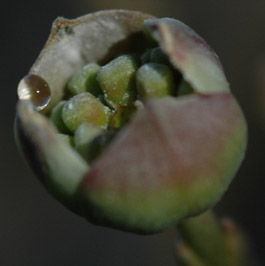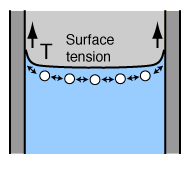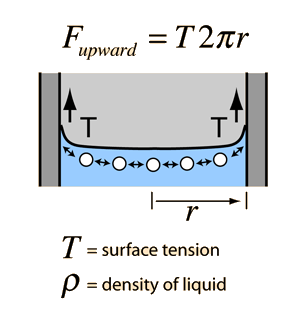Surface Tension and Bubbles
The surface tension of water provides the necessary wall tension for the formation of bubbles with water. The tendency to minimize that wall tension pulls the bubbles into spherical shapes (LaPlace's law). The interference colors indicate that the thickness of the soap film is on the order of a few wavelengths of visible light. Even though the soap film has less surface tension than pure water, which would pull itself into tiny droplets, it is nevertheless strong to be able to maintain the bubble with such a small thickness. |  |
The pressure difference between the inside and outside of a bubble depends upon the surface tension and the radius of the bubble. The relationship can be obtained by visualizing the bubble as two hemispheres and noting that the internal pressure which tends to push the hemispheres apart is counteracted by the surface tension acting around the cirumference of the circle.
For a bubble with two surfaces providing tension, the pressure relationship is:

| Derive the relationship | Soap bubbles |
Fluid concepts
| HyperPhysics***** Mechanics ***** Fluids | R Nave |











